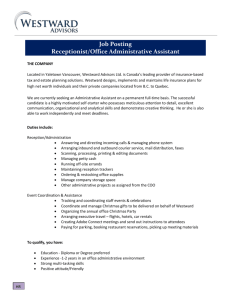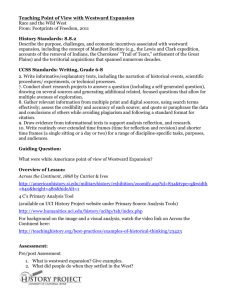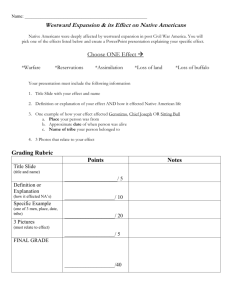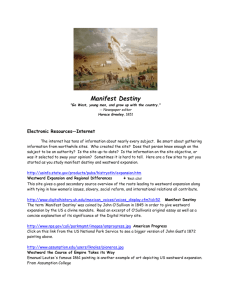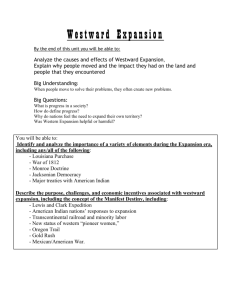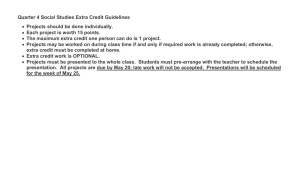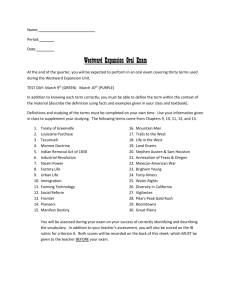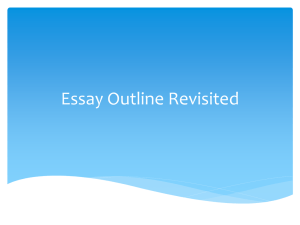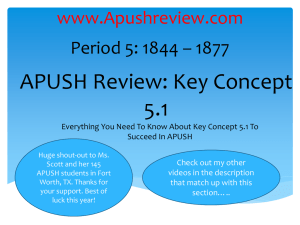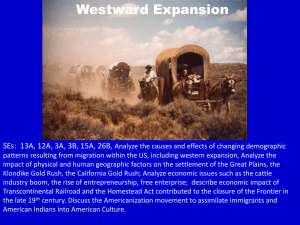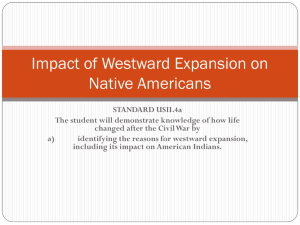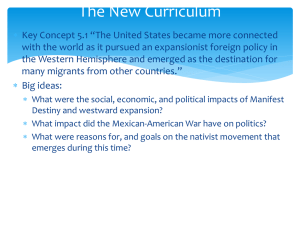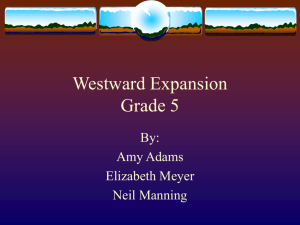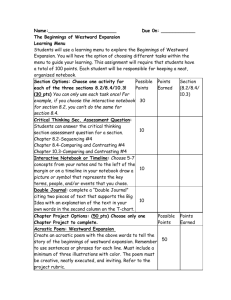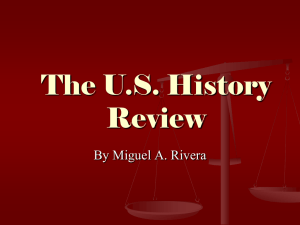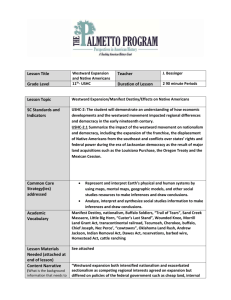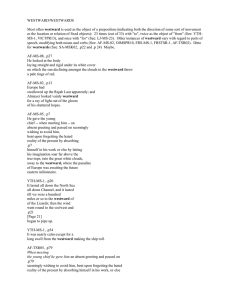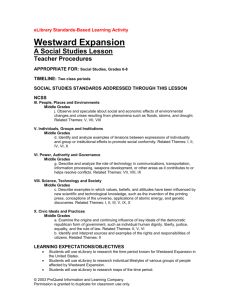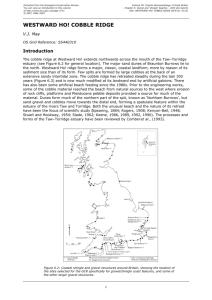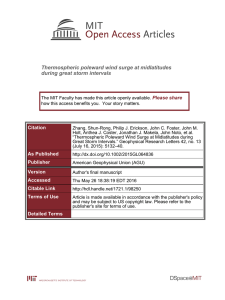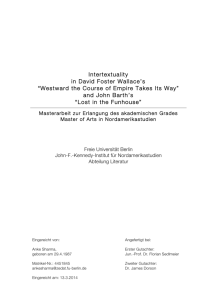8.8 Teaching Point of View through Westward Expansion
advertisement
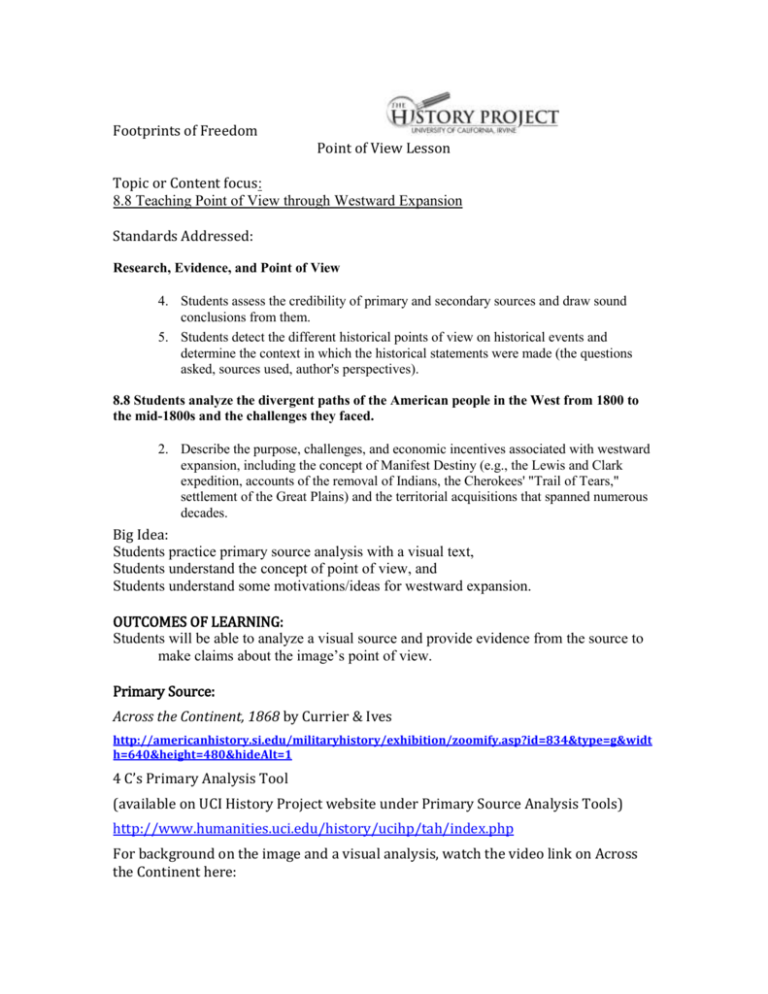
Footprints of Freedom Point of View Lesson Topic or Content focus: 8.8 Teaching Point of View through Westward Expansion Standards Addressed: Research, Evidence, and Point of View 4. Students assess the credibility of primary and secondary sources and draw sound conclusions from them. 5. Students detect the different historical points of view on historical events and determine the context in which the historical statements were made (the questions asked, sources used, author's perspectives). 8.8 Students analyze the divergent paths of the American people in the West from 1800 to the mid-1800s and the challenges they faced. 2. Describe the purpose, challenges, and economic incentives associated with westward expansion, including the concept of Manifest Destiny (e.g., the Lewis and Clark expedition, accounts of the removal of Indians, the Cherokees' "Trail of Tears," settlement of the Great Plains) and the territorial acquisitions that spanned numerous decades. Big Idea: Students practice primary source analysis with a visual text, Students understand the concept of point of view, and Students understand some motivations/ideas for westward expansion. OUTCOMES OF LEARNING: Students will be able to analyze a visual source and provide evidence from the source to make claims about the image’s point of view. Primary Source: Across the Continent, 1868 by Currier & Ives http://americanhistory.si.edu/militaryhistory/exhibition/zoomify.asp?id=834&type=g&widt h=640&height=480&hideAlt=1 4 C’s Primary Analysis Tool (available on UCI History Project website under Primary Source Analysis Tools) http://www.humanities.uci.edu/history/ucihp/tah/index.php For background on the image and a visual analysis, watch the video link on Across the Continent here: http://teachinghistory.org/best-practices/examples-of-historical-thinking/23423 Assessment: Pre/post Assessment 1. What is westward expansion? Give examples. 2. What did people do when they settled in the West? 3. Why were people moving West? 4 C’s Response and Analysis to lesson question: What were white Americans point of view of Westward Expansion? Learning Sequence: 1. Introductory Activity: Pre-test 2. With half of the image covered, ask students to examine the image Prompt students with the following questions: What is going on in the picture? What stands out and why? What emotions do you feel when you look at the picture? Who is the most important figure(s)? What can you tell about the person who created this piece? Where ideas are communicated in this image? Why? What happened in the time the person lived? How does this piece give us an understanding of westward expansion? Was it positive or negative? Students Predict: What is going on the other side of the image? 3. With entire image uncovered, students analyze the source with the 4 C’s of Primary Source Analysis for Images A. The teacher presents the question for the day: How did Anglo-Americans view Westward expansion? B. Present the source and citation and ask is it primary or secondary? What type of C. Prompt students with the following questions: Content: What is going on in the entire picture? What stands out? What emotions do you feel when you look at the picture? How is one side different from the other? Communication: Who is the most important figure(s)? Who are the least important figures? What can you tell about the person who created this piece? What is the importance of the railroad in the image? How are the colors important to giving us an understanding of the creator’s point of view? Where ideas are communicated in this image? Why? What happened in the time the person lived? Conclusion: How does this piece give us an understanding of westward expansion? Was it positive or negative? Why? What is the Anglo-American’s view of westward expansion? How do we know? 4. Closing discussion: What can we learn about the Anglo-Americans’ point of view by examining this entire image? What ideas about westward expansion are communicated? How is this similar or different to what we have already learned in class? What other people’s point of view would be useful for us to have to better understand westward expansion? 5. Students take Post-test
